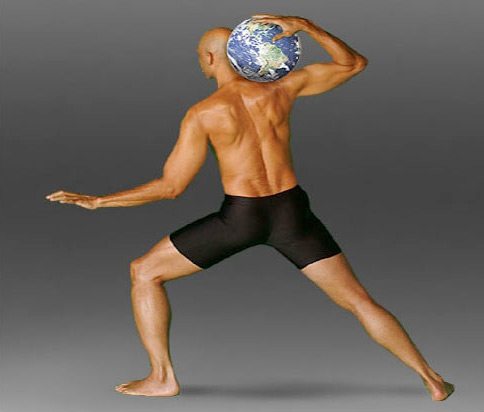
(Kareem Abdul-Jabbar)
Certain things are inevitable. Death and taxes, of course. A famous athlete will indignantly deny using steroids, then get caught. An A-list actor will go on all the talk shows and brag about how proud he is of his new movie—and it will suck. Reality shows will multiply like randy rabbits. A politician will be caught up in a sex scandal, and his wife will stand stoically beside him as he publicly confesses all. Nothing can stop these things from happening.
Same goes for weight gain after 40.
Studies show that after men turn 40, even if you are a devout athlete working out every day, your waistline is fighting to expand. After you turn 50, the fight turns into all-out war: muscles start to lose mass and the waistline starts demanding larger pants. This expansion is usually due to increased abdominal fat, which is linked to high blood pressure, high cholesterol, diabetes, and heart disease. For women, the waistline can predict cardiovascular disease and cancer. A medical study released this week (and reported in the April 8th Los Angeles Times) concluded that women with waists 35 inches or greater had a 79% higher chance of premature death than women whose waists were 28 inches or less—even if the women were within the “normal†weight range.
The problem with relying just on exercise to combat this gain is it doesn’t work. A study of nearly 5,000 runners between the ages of 18 and 50 showed that they gained weight at about the same rate no matter how many miles each person ran per week. While adding 20 minutes on your treadmill time or another set to your weight-lifting routine may keep the muscles trim, for most people, the invading army of fat will continue to gain ground.
However, when you combine a nutritionally balanced diet with exercise, you have a much greater chance of sending fat on a hasty retreat. That’s why I’m very serious about what I put into my body. Also, I know that because most people’s heads come up to my waist, they’re staring right at my gut, so every extra inch looks even bigger to them.
OK, so let’s get you eating healthier.
What to Eat
Remember, your best chance of defeating fat is by combining nutrition with exercise, so the combination of foods I’m recommending is for someone who works out regularly. This will help fuel your workout and maintain weight control.
- Carbohydrates. You’ll need them. Despite what trendy diets suggest, most athletes eat carbs. But the trick is in picking the right ones. Eat multi-grain breads, whole wheat pastas, basmati or brown rice, oatmeal, fruit (fresh, canned, or cooked), sweet potatoes, and new white potatoes.
- Protein. This helps your muscles grow. Also, it fills you up so you’re less likely to overeat or hunt down a Twinkie soon after your meal. If you’re exercising regularly, you’ll need to eat 1 to 1.2 grams of protein per pound of body weight. For best results, you should have a protein-rich meal or snack within 90 minutes after your workout. When selecting your protein source, the key is the keep it as low in fat as possible. For meats, make sure it’s always a lean cut (and avoid gravies and sauces). Almonds, peanuts, and cashews are a great source of protein. So are yogurt, cottage cheese, salmon, chicken breasts, turkey, eggs, milk and tuna.
- Healthy Fats. We’ve been programmed to flinch at the word “fats,†but some fats are necessary for a nutritional diet. The fats found in olive oil, avocado, salmon and nuts is good for you. However, even though it has the word “healthy†in front of it, you still need to use them moderately. They are high in calories, so you should limit your daily calorie intake from fats to 20%.
It’s Not Just About Weight Loss
Don’t worry about losing weight right away. First, focus on improving your diet, which will make your body stronger and give you more energy. Then, if losing weight is part of your goal, shoot for a modest but doable one pound per week. To lose one pound, you’ll have to exert 3,500 more calories than you take in. This can be achieved by spending 500 more calories a day more than you consume. The best way to accomplish this is through a combination of diet and exercise: eat 250 calories less each day, and burn off 250 calories more.
Take It Easy
Don’t make too many radical changes at once. That shock to your usual routine sets you up for failure. This is about slowly changing habits. Each week, replace something that you regularly eat that isn’t healthy with something that is. The apple instead of the potato chips; the almonds instead of the donut. The same advice holds for exercise. Each week add one more set to your weight routine, one more minute to jumping rope or aerobics.
Within a short time, you will be in control of your health. As we get older, our bodies may conspire against us, but we didn’t get to this age without learning a few tricks along the way. Your brain controls your body; don’t let it forget who’s boss.
